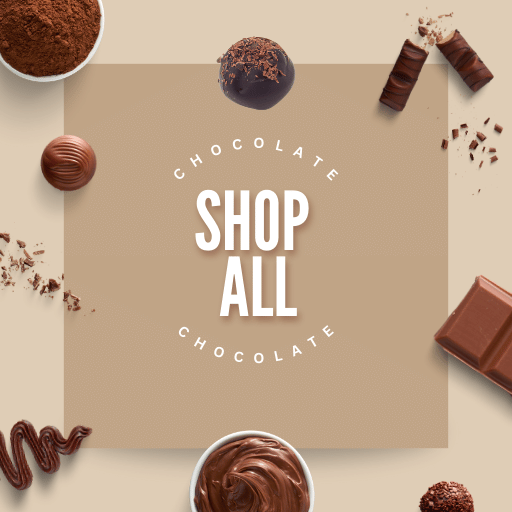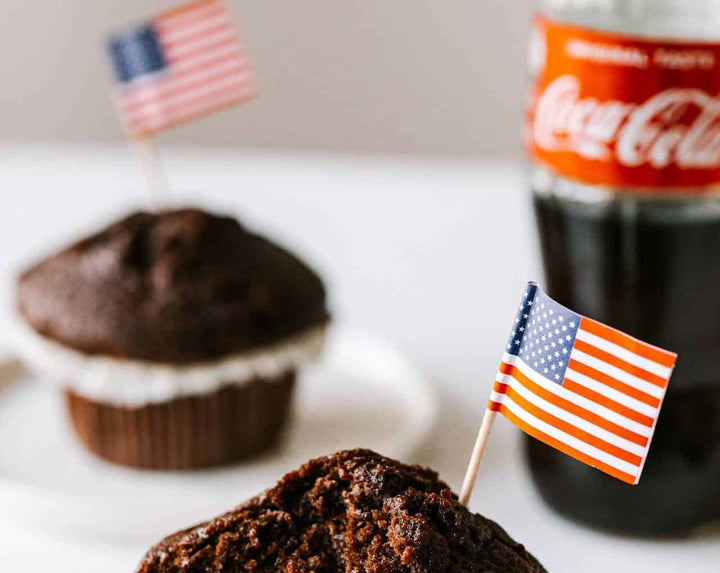Sending a parcel of chocolate from the UK to Canada is more than just sharing a delightful confection; it's about understanding the nuances of international postal regulations and customs laws.
Specific considerations need to be considered when bridging the distance between the UK and Canada.
This post will guide you through sending chocolate from the UK to Canada, covering essential aspects such as customs regulations, packaging advice, and other key factors to ensure your thoughtful gift navigates the complexities of international shipping.
Can I Send Chocolate to Canada From the UK by Post?
You can send chocolate from the UK to Canada by post, but it's essential to comply with Canada's customs and biosecurity regulations.
Ensure the chocolate is commercially packaged and declare it appropriately.
Check the latest Canada Border Services Agency guidelines to ensure your shipment meets all necessary requirements.
Let's look at the details:
-
Customs and Import Regulations: Canada has specific customs regulations regarding the import of food items, including chocolate. You must accurately declare the contents and value of your package on a customs declaration form. Failure to comply with these regulations can result in delays, additional fees, or confiscation of your package by Canadian customs.
-
Food Safety Standards: The chocolate should be commercially packaged and sealed. Homemade or unpackaged food items might face more stringent scrutiny or restrictions under Canadian regulations.
-
Quantity and Commercial Value: If you send large quantities or high-value items, it may be considered a commercial shipment, subject to different regulations and possibly import duties.
-
Packaging for Transit: Proper packaging is crucial to ensure that the chocolate arrives in good condition, especially given the varying climates in Canada. Insulated packaging or cold packs are advisable to prevent melting, especially when sending chocolate during warmer periods.
-
Shipping Carrier Restrictions: Different postal services and couriers have rules and limitations regarding international shipping of food items. Check with your chosen postal service or courier for any specific guidelines.
-
Insurance and Tracking: Consider shipping insurance and tracking services for added security.
-
Recipient's Responsibilities: The recipient in Canada may be responsible for any customs duties, taxes, or inspection fees levied on the chocolate, depending on its value and the regulations in force at the time of receipt.
Before sending chocolate to Canada, you should check the most current guidelines from the UK postal service and the Canadian Border Services Agency (CBSA).
Regulations can change, and staying informed will help ensure that your chocolate arrives safely and without unexpected delays or charges.

Can I Take Chocolate to Canada From the UK by Plane?
You can take chocolate from the UK to Canada by plane.
But, you must declare it to the Canada Border Services Agency upon arrival and ensure it adheres to Canadian customs and biosecurity regulations.
Let's look at the details:
-
Declare at Customs: Upon arrival in Canada, you must declare all food items, including chocolate, at customs. Canada has specific regulations for importing food products to ensure safety and prevent the introduction of pests and diseases.
-
Commercially Packaged: It's recommended to bring chocolate that is commercially packaged. Homemade or unpackaged food items may face more scrutiny and could be prohibited under Canadian regulations.
-
Quantity and Purpose: Bringing chocolate for personal use, such as gifts or personal consumption, is generally allowed. However, the quantity should be reasonable. Large quantities might be questioned and could be perceived as for commercial purposes, which are subject to different regulations and potential duties.
-
Inspection: Declared items may be inspected by customs officials. If the chocolate is deemed low risk and for personal use, it's likely to be allowed entry.
-
Storage During Flight: Consider how to store the chocolate during the flight, especially if travelling during warmer periods or to warmer regions of Canada. Insulated packaging can help prevent melting.
-
Duty-Free Allowance: Be aware of Canada’s duty-free allowance for imported goods. If the value of the chocolate exceeds this allowance, you might need to pay customs duty.
-
Check for Updates: Regulations and allowances can change, so it's always advisable to check the latest guidelines from the Canada Border Services Agency (CBSA) before travelling.
Taking chocolate from the UK to Canada by plane for personal use is generally permissible, but adherence to customs regulations and proper declaration
Do You Have to Declare Food When Travelling From the UK to Canada?
When travelling from the UK to Canada, it is necessary to declare all food items, including chocolate, at customs.
Canada has specific regulations regarding importing food products to ensure safety and prevent the introduction of pests and diseases.
Here's what you need to know:
-
Declaration Process: Upon arrival in Canada, you must complete a customs declaration form. On this form, you must declare all food items you bring into the country, regardless of the quantity or type, including chocolate or confectionery products.
-
Reason for Strict Regulations: The main reason for these regulations is to protect Canada's agriculture and environment from foreign pests and diseases. Even items that may seem harmless, such as commercially packaged chocolate, must be declared.
-
Inspection and Clearance: Canada Border Services Agency (CBSA) officers may inspect Declared food items. If the items are safe and compliant with Canadian regulations, they will be allowed into the country.
-
Penalties for Non-Declaration: Failing to declare food items can result in penalties, including fines. Even if you’re unsure whether an item needs to be declared, it's safer to declare it to avoid potential issues.
-
Personal Use: Food items for personal use are generally permitted but must still be declared. The amount and type of food should be reasonable for the duration of your stay and clearly for personal consumption.
-
Recent Changes and Guidelines: It's essential to check for the latest regulations before travelling, as rules can change. The Canada Border Services Agency (CBSA) provides up-to-date information on what needs to be declared and what is prohibited or restricted.
Always err on the side of caution and declare any food items you are carrying.

What Foods Can You Not Take From the UK into Canada?
When travelling from the UK to Canada, certain foods are generally prohibited or subject to strict regulations due to Canada's biosecurity laws.
These regulations are in place to protect the country's environment and agriculture from foreign pests and diseases.
Here are some of the foods typically restricted or prohibited:
-
Meat and Meat Products: Fresh, dried, canned, or cooked meats are often not allowed due to concerns about foot-and-mouth disease. This includes items like sausages, hams, and pâté.
-
Dairy Products: Some dairy products, especially those containing raw milk, can be restricted. Processed dairy products are generally less problematic but may still require declaration.
-
Fruits and Vegetables: Fresh fruits and vegetables are frequently not allowed because of the risk of introducing pests and diseases. Pre-packaged and processed fruit and vegetable products are generally less restricted.
-
Plants and Seeds: Bringing plants, seeds, and bulbs intended for planting is usually restricted and often requires permits and phytosanitary certificates.
-
Eggs and Egg Products: There are restrictions on eggs and egg products brought into Canada, primarily due to concerns about avian diseases.
-
Honey and Honey Products: Honey can be restricted because of concerns about diseases affecting bees.
It's important to note that these are general guidelines, and the specifics can change based on current biosecurity concerns.
For the most accurate and up-to-date information, checking with the Canadian Food Inspection Agency (CFIA) or the Canada Border Services Agency (CBSA) before travelling is recommended.
Commercially packaged and processed food items, such as chocolate and confectionery, are generally less problematic but must still be declared upon arrival.
Where Can You Buy Tasty UK-Made Chocolate?
Whitakers Chocolates, renowned for our long history in crafting delicious and affordable chocolates, offers a range of options suitable for everyone, including vegetarian, vegan, and gluten-free choices.
Our top-selling products, such as indulgent Coffee Creams, Neapolitans, Chocolate Wafer Thins, Stem Ginger and Luxury Chocolate Truffles, are perfect for enhancing your mocha coffee experience.
Click here to see our full range of delicious chocolates...
Some Notes From an Expert Chocolatier
As an expert chocolatier with experience exporting our products to various countries, I have gained valuable insights into the complexities and rewards of international trade in the confectionery sector.
Taking our chocolates beyond national borders has been both challenging and exhilarating, offering a unique opportunity to showcase our craftsmanship on a global stage.
Participating in international trade fairs and expos has been crucial to our export journey.
These events are a platform to introduce our chocolates to new markets, connect with potential buyers, and gain exposure to diverse tastes and preferences.
Navigating different countries' import regulations, especially for food products, requires diligence and adaptability.
Each country has its own set of rules concerning food safety, labelling, and packaging, which we must meticulously comply with to ensure smooth entry into these markets.
Building relationships with local distributors and retailers has been fundamental in establishing our presence in new markets.
These partnerships are crucial for navigating distribution logistics and gaining insights into consumer behaviour and trends in different regions.
Final Notes On Taking Chocolate to Canada From the UK
Taking chocolate from the UK to Canada is feasible but requires careful compliance with Canada's biosecurity and customs regulations.
It's essential to declare all food items, including chocolate, to the Canada Border Services Agency (CBSA) to avoid penalties or confiscation.
Chocolate must be commercially packaged, as homemade or unpackaged items might face stricter scrutiny or prohibition.
For personal use or gifts, ensure the quantity of chocolate is reasonable to avoid it being considered for commercial purposes.
Consider using insulated packaging, especially in warmer periods, when carrying chocolate on a flight to prevent melting.
It's also important to regularly check the latest guidelines from the CBSA, as regulations and allowances can change.











